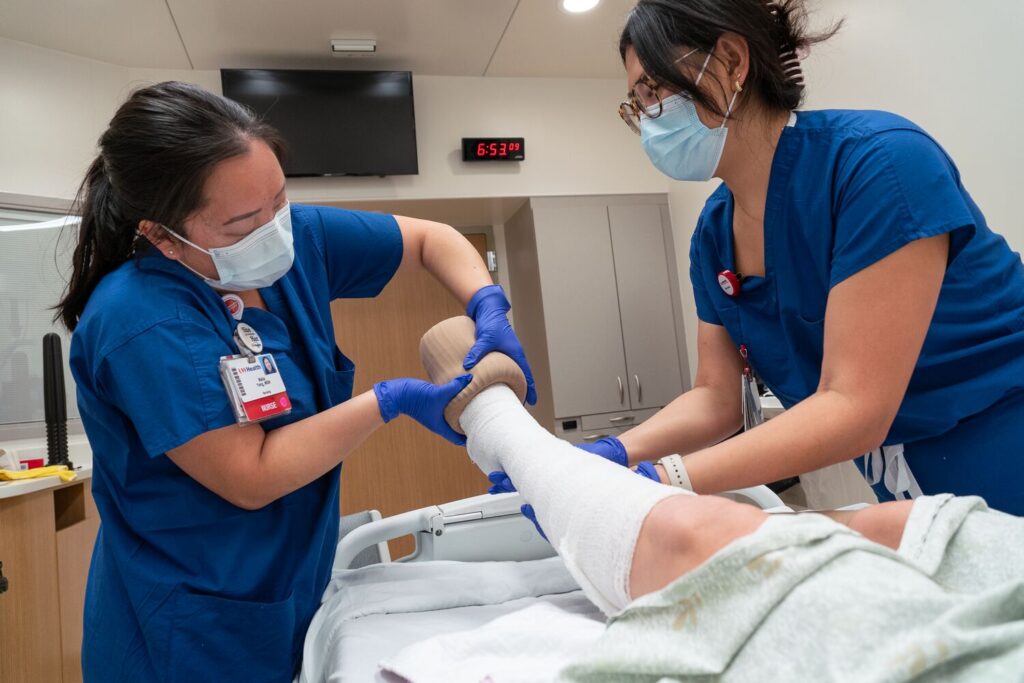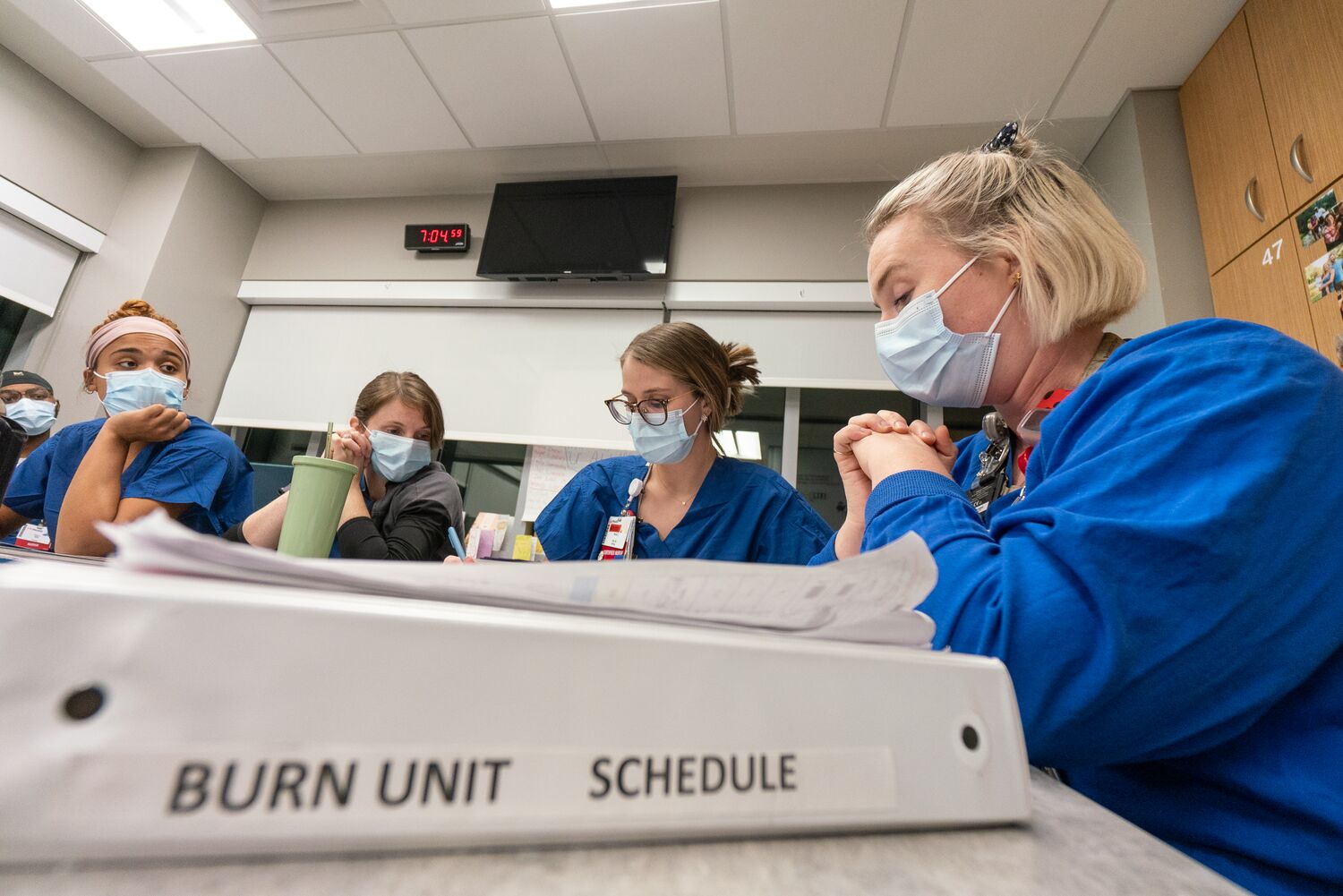
In Summer 2022, the Burn Intensive Care Unit (ICU) saw an unusually high number of large burn cases, 13 in total, which is almost unheard of, according to Luke Markus, BSN, RN, burn unit care team leader (CTL).
“To apply some perspective, over the last three years, our 11-bed ICU has cared for an average of 16 large burns, adult and pediatric, in a given year,” Luke said. “The reason this is notable is because when a patient is considered a large burn — 20% or greater of their body is burned — they need highly specialized care during their stay, with an emphasis on the first 24–48 hours, which is performed by the burn unit nurses.”
Luke explained that in those first critical hours, the priority is not standard wound care — burn nurses are monitoring the patient’s urine output and increasing or decreasing the patient’s intravenous fluids because the kidneys could shut down without proper fluid management. In addition, a high protein and high calorie diet is an essential building block to wound healing and because large burn patients cannot physically eat enough calories to heal their burn, a feeding tube provides what they need.
“We all rally together to support the nurses who are assigned the large burn cases,” said Naomi Staton, BSN, RN, burn unit CTL. “It was very tough this summer — so much wound care, so many sick patients, and not enough burn nurses.”
That’s where collaboration was vital.
The burn unit nurses joined forces, with many — if not all — units throughout University Hospital and American Family Children’s Hospital, as well as the Emergency Department. According to Luke, some patients are moved to the Trauma and Life Support Center or Pediatric Intensive Care Unit due to specialized care needs, with burn nurses still performing the patient’s wound care every day, sometimes twice day.
“What’s incredible is that burn nurses can be seen throughout the hospital performing wound care on non-burn patients as well,” Luke said. “The provider burn team is asked to help manage a wide array of wounds and the burn nurses complete the care, which speaks volumes to their clinical acumen.”
Burn unit nurse Britney Hanko, BSN, RN, greatly values the partnership in these instances.
“To collaborate with other nurses throughout our system is special, and working with them during stressful times like the summer of 2022 builds relationships that last years,” Britney said.
That camaraderie, creativity and collaboration among the burn nurses and interdisciplinary teams of physicians, advanced practice providers, physical therapists, occupational therapists, nursing education specialists and clinical nurse specialists has resulted in positive outcomes for our patients. This was validated by the re-designation of the UW Health Burn Center in 2022 as an Adult and Pediatric Verified Burn Center by the American Burn Association and American College of Surgeons.
The work our burn nurses do every day is truly remarkable.

Check out more stories featuring the great work of our nurses in the 2022 Nursing Annual Report (pdf).
